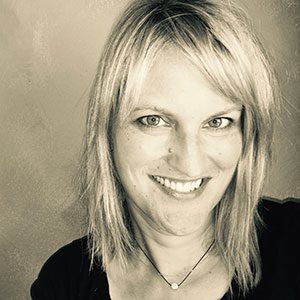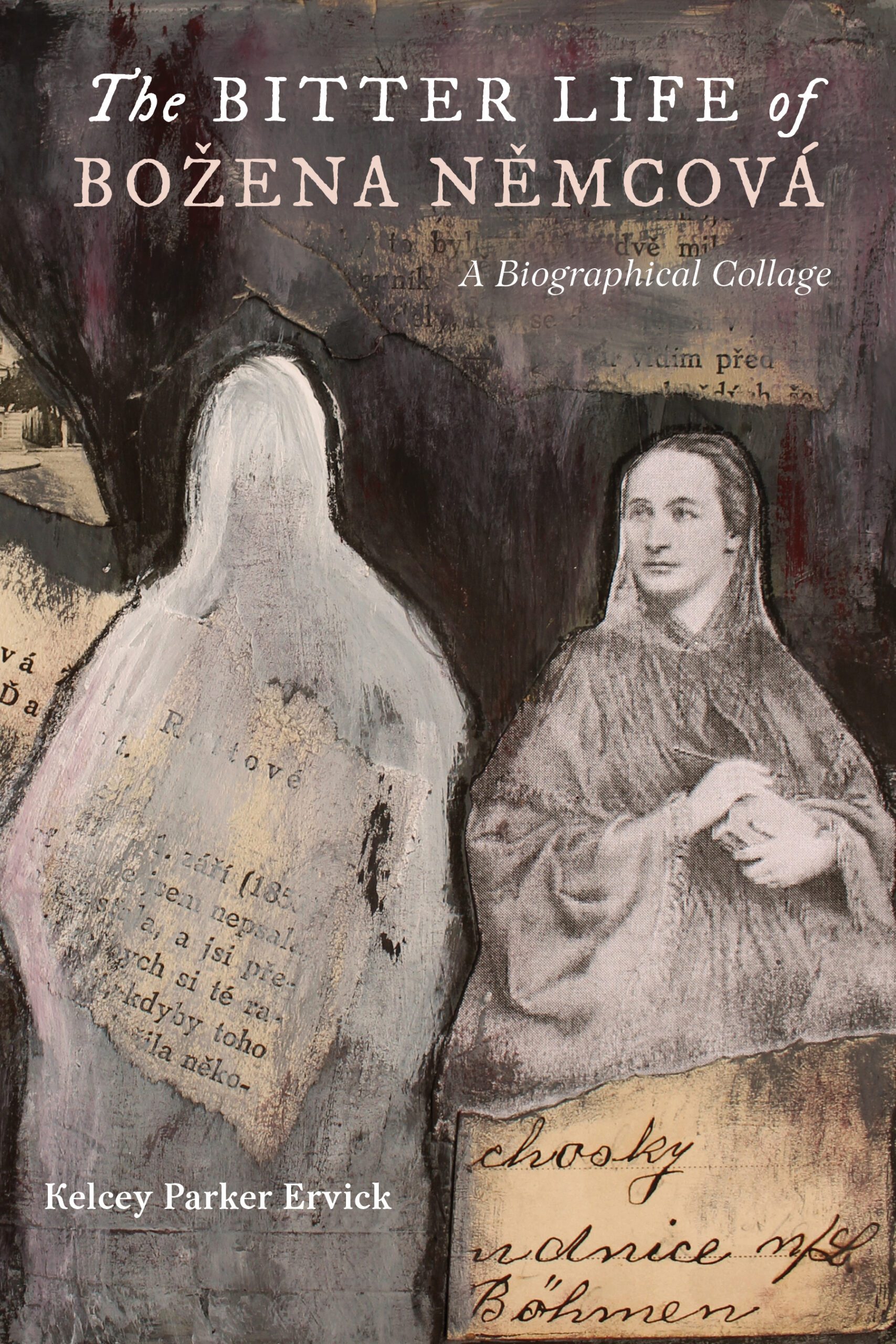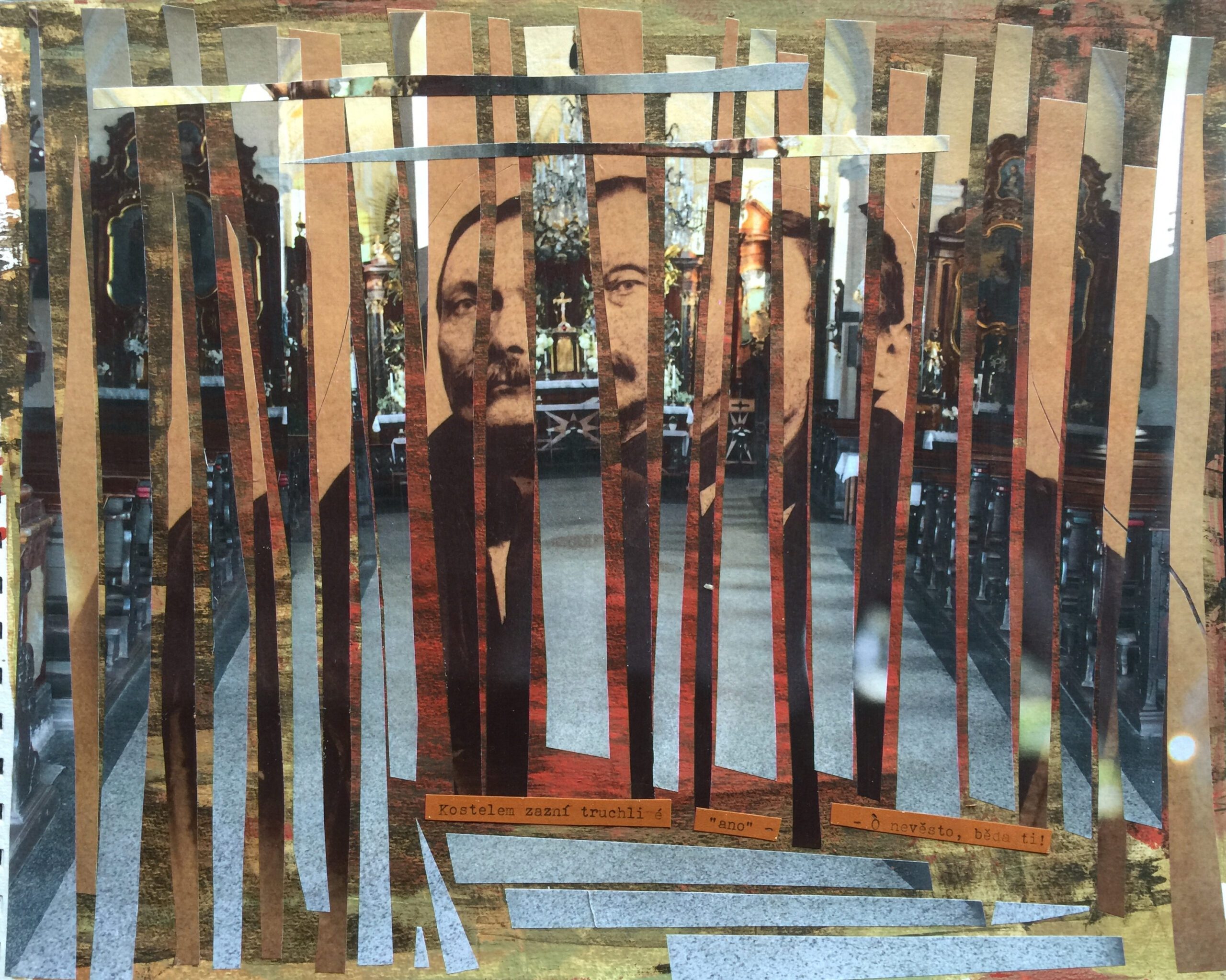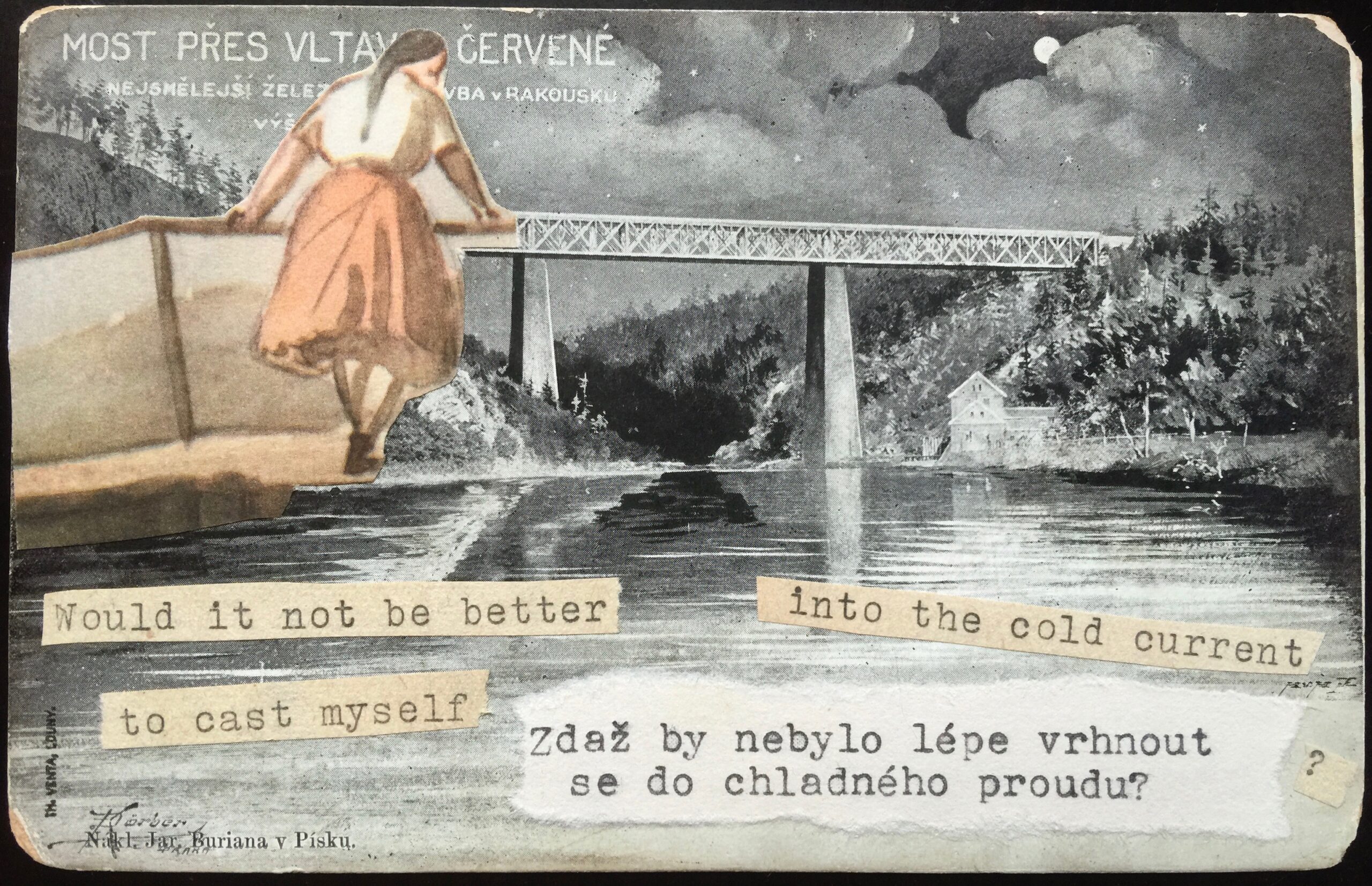
The woman whose face appears on the Czech five-hundred koruna doesn’t appear there without consequence. During the late 19th century, politically active Božena Němcová was an innovator of Czech literature. Twenty-first century writer Kelcey Parker Ervick continues Němcová’s legacy in her own fairy tale-like work: a biographical collage, The Bitter Life of Božena Němcová. Comprised of biographical information, artwork, footnotes, and letters, the work challenges how readers will think of biography. And why shouldn’t it?
Do we remember a human life in the linear fashion in which it’s lived? Or do we stop and linger here and there on a particular memory or event as it crosses the mind, bittersweet and viscous?
Fairy tale and folk tale writer Božena Němcová was a rebellious woman intent on changing the literary landscape—and Kelcey Parker Erivck’s work heeds the same call.
***
The Rumpus: You’ve been to Prague many times in search of artifacts of Božena Němcová’s life. Can you share with us an interesting experience you had while in your search?
Kelcey Parker Ervick: There was a nice moment as the book was headed to production… The Sedlec Ossuary is a nine-hundred-year old church that is home to thousands upon thousands of human bones turned into creepy-awesome sculptures. I love visiting the church and wanted to include my photos of it in the book. But the Ossuary is in fact part of the local diocese, and I had to obtain permission from the Bishopric in Hradec Králové. I submitted my request via email, and the woman who wrote me back said that, to make a decision, they would need to see an excerpt of my manuscript. She suggested that some people wish to use images of the bones in, shall we say, inappropriate ways. I sent her a short sample of my manuscript and the images I hoped to use, and when she wrote back to give me approval, she included, in her broken English, a very sweet personal note saying that it makes very happy to receive a message such as mine from someone “who is working on good stuff and is a pleasure to read it.” Amid my hectic schedule of securing rights and finalizing edits, it pretty much made my month to have this unknown Czech woman step out of her administrative role and respond to my work as a human being.
Rumpus: Do you find irony in the fact that Božena Němcová wrote fairy tales and her own life was so challenged by circumstance and the historical events surrounding the time she was writing?
Ervick: Fairy tales are, as Jack Zipes says, a subversive genre. They are not the sanitized shortcut to a happy ending that we have reimagined them to be. In fact, our “happily ever after” of marriage to a man you love was not a given in the 1840s. Němcová’s own marriage—at age seventeen to a man almost twice her age—was arranged, and it was miserable. “I cried my first bitter tears,” she wrote regarding her marriage: “I saw very early our natures were not suited to each other.” Many of her fictions and fairy tales focused on plots of young girls who were expected to marry one man even though they were in love with another. Giving her characters a “happy ending” was actually a challenge to the social order.
Fairy tales question social norms, expose corrupt leaders, and shift the narrative focus to the disempowered—to women and children. They are primarily a woman’s genre—a series of stories exchanged amid spinning circles—and in Němcová’s time, the other genre for women was the cookbook (which often came with advice about how to please one’s husband, which she had no interest in doing).
Němcová’s mission was both nationalist and proto-feminist. She traveled to small villages in Bohemia and Slovakia recording folk tales to preserve the stories, culture, and languages of her people. But she was not interested in merely recording tales; she was interested in making the stories more literary and beautiful, even at the expense of accuracy (which got her in some trouble). And she was even more interested in positively portraying a different type of girl—one who was athletic and clever, equal to boys. In Divá Bára (Wild Bára), Bára is the hero who saves her female friend from an arranged marriage, her male friend from the other boys who bully him, and her own future husband from two actual bulls. The villagers view her as a girl you should not marry, but the narrator challenges these views, insisting that Bára is a girl to be reckoned with.
Rumpus: Why the artistic choice to include images with this work? And how do these images lend themselves to the greater form of the collaged work?
Ervick: I was (am) obsessed with collage in all forms: from the 2D images of Berlin Dada artists (Hannah Höch, Raoul Hausmann, George Grosz) and the Czech Surrealists (Toyen, Jindřich Štyrský) to the 3D shadowboxes of Joseph Cornell to the literary collage of Anne Carson’s Nox, Lawrence Sutin’s A Postcard Memoir, and Robert Seydel’s Book of Ruth. The Czech collage artist Jiří Kolář (whose last name is awesomely pronounced a lot like “collage”) compiled a Dictionary of Methods for collage including: crumplage, intercollage, and ventillage, some of which involved altering well-known paintings and images of historical figures. He even created collages of Němcová. I borrowed his technique of prollage to create an ominous wedding-day view of her unfriendly looking husband spliced with the church they were married in:
At used book stores in Prague I bought copies of Němcová’s stories and collected letters, I cut and collaged pages, including some illustrations and text on vintage Czech postcards. In the postcard-memoir section of my book, not only am I on a quest for a happy ending, I’m on a quest for a Czech typewriter. I wanted to type all those awesome Czech letters!
This project was such a multifaceted, multisensory experience for me, from the travel and language study to the collaging and painting. I didn’t know the images would be included; making them was just part of my process. I was thrilled that Rose Metal Press was open to including all the various elements of the project in the book. I hope the images add depth to the reader’s experience by offering fragmentary glimpses of Němcová, snippets of the Czech language, and a feeling of something made by hand.
Rumpus: How do you find a biographical collage challenges the truth of what we call “biography” and what we define as subjective experience? How does this form bring new perspective to agency? To memory as a subjective experience?
Ervick: What amazes me is how much truth biographers can reveal about a person’s life! They find out everything. For example, thanks to her biographer Nancy Milford, I know that when she was nineteen, Edna St. Vincent Millay began a two-year relationship with an imaginary man. Thanks to Flannery O’Connor’s biographer Brad Gooch, I know that a young Mary Flannery wrote a seventeen-page poem, “Mistaken Identity,” about “a case of gender confusion among geese.”
Biographies are pretty awesome in that way. But I’ll never be a biographer because not all facts are as interesting as those, and I’m just not interested in what Virginia Woolf (in Orlando) calls “the first duty of a biographer, which is to plod, without looking to right or left, in the indelible footprints of truth.” I’m interested in language, mood, atmosphere, white space, hints, possibilities, rumors. I’m interested in bringing the reader into a heightened experience of knowing and not-knowing, of dissonance and delight.
At one point as I was gathering material about Němcová and trying to figure out what form my research might take, I considered writing a historical novel of her life. But the fact is, historical novels often bore me. They read like a series of facts fleshed out into scenes, plodding, “without looking left or right, in the indelible footprints of,” in this case, plot.
So then I thought, I’ll do some meta-version: I’ll write a novel about a novelist writing a historical novel about Němcová. But then the novelist-narrator would demand her own plot, which would distract from Němcová as my subject. I guess this sort of happened anyway, since the second part of the book is memoir. But I really wanted to explore exactly what you’re asking about—truth, memory, and subjectivity—and the foundation had to be fact.
The Rumpus: What moved you to write the last portion of the text as letters to Božena Němcová, and how do you find that part of this biography creates a mirroring effect between author and writer?
Ervick: I am drawn to literature because it seems so much richer and more dramatic than my dull days. But as I researched and wrote this book, the plot began to thicken in my own life: I got tenure, got divorced, became a single-parent to my teenaged daughter. I even fell in love! In the midst of it I was traveling around the Czech Republic, hoping to learn more about this woman who dedicated herself to literature, who wrote amazing letters, and who never found lasting love. How could I not want to write to her?
I like what you say about a “mirroring effect” because just as I shaped her life on the page, she shaped my life by giving me perspective on my experiences. Her letters to her lovers provided a framework for me as my marriage ended and as I found new love; her tales of traveling in Slovakia gave me a connection as I traveled to my great-grandparents’ village and met my relatives there; her famous book Babička, inspired by her grandmother’s life and death, gave me solace as my own beloved grandmother died on Mother’s Day. Who she is in my book is who is she is to me. She means something else to Czech people, and her “meaning” changes with each generation.
The fact is, while a biographer is busy telling the life of one person, she has her own life to live. The story of that life can be just as interesting as the story of the original subject. But even better, and what I wanted to explore here, is the dialectical relationship between the two lives, the two stories—and the new story spark that emerges from their contact.
***
Kelcey Parker Ervick is the author of The Bitter Life of Božena Němcová, a hybrid work of biography, memoir, and art. Her previous books include Liliane’s Balcony (Rose Metal Press), a novella set at Frank Lloyd Wright’s Fallingwater, which won silver awards for the Independent Publishers, Foreword, and Eric Hoffer Book Awards. Her story collection, For Sale By Owner (Kore Press), won the 20112 Next Generation Indie Book Award in short fiction was a finalist for the 2012 Best Books of Indiana in Fiction. She has received grants from Indiana Arts Commission and the Sustainable Arts Foundation. Her stories, essays, and collage and have appeared or are forthcoming in numerous literary journals including Colorado Review, Passages North, Ilanot Review, Notre Dame Review, Superstition Review, Bellingham Review, Indiana Review, The Common, Western Humanities Review, and Image. She has a PhD from the University of Cincinnati and teaches creative writing and literary collage at Indiana University South Bend.







